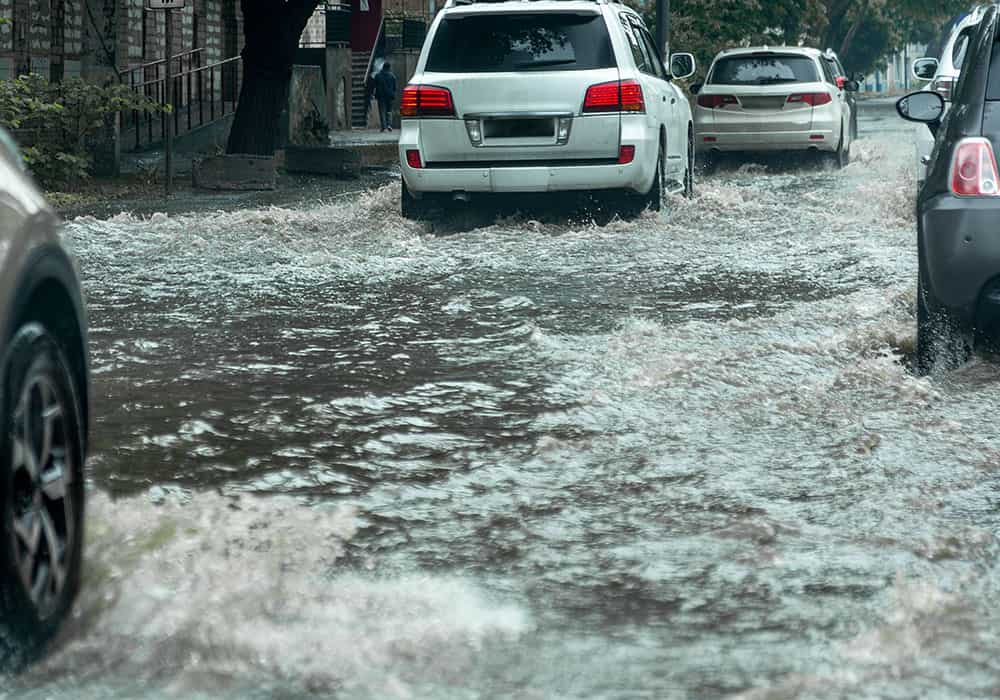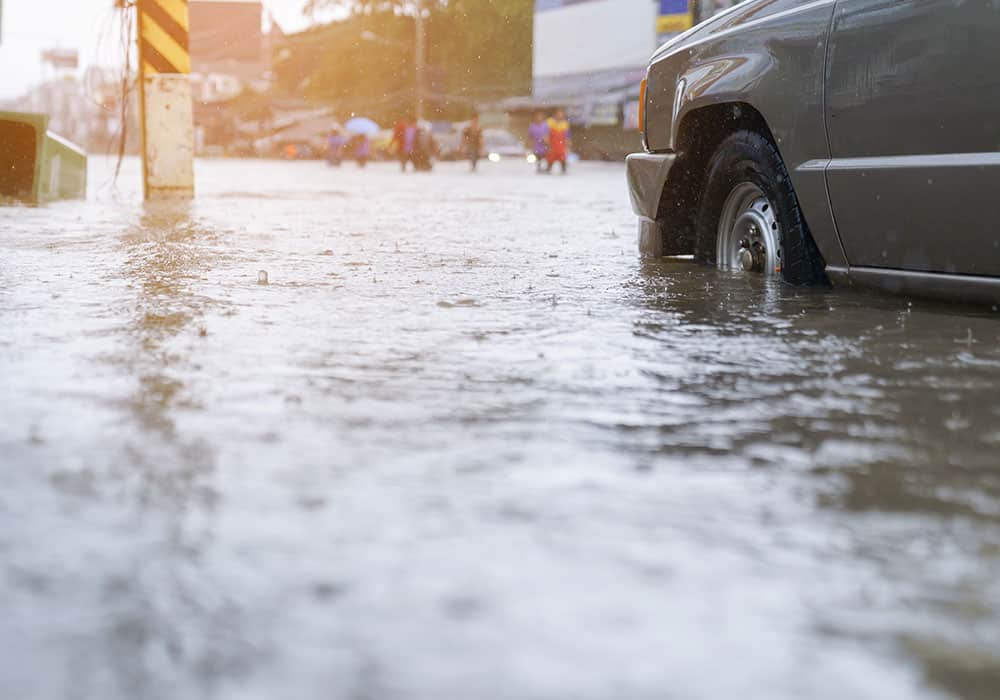During the recent Auckland floods many of us were astounded to see cars driving through what appeared to be deep flood waters, but is this such a good idea? And if you suddenly find yourself deep in flood water should you keep driving?
Simply put, when a flood hits you should not drive unless it is absolutely essential. However, sometimes it is possible to get caught in it. In that case, here are some steps you can take to help you get through a flood safely.
Important Safety Note
First and foremost, let’s talk about safety. If the water is too deep or the current is too strong, get out of the car and find higher ground. It’s not worth risking your life for a car, no matter how much you love it. However, if you have to drive, follow these tips.
Step 1: Assess The Water Level
According to AA Motoring, “The standard car sill height can be around 15-20 cm and so water could be nearer your doors as it rises.
In water, a foot deep, most cars would start to float or feel a bit light, and double the depth could be in danger of being swept away in flowing waters.” Therefore, as a rule of thumb, if the water is higher than the bottom of your car doors, it’s best to turn around and find another route, especially if the water is also moving.
Step 2: Drive Slow & Stay At A Consistent Speed
When driving through flood waters, it’s important to go slow and steady and try to drive in the middle of the road as it will be slightly higher than the edges.
According to AA Motoring, “It is recommended not to exceed 5 km/h when driving through water so as to not overtake the bow wave generated at the front of the vehicle.” Overtaking the bow wave can cause water to be forced into the engine.

Step 3: Drive Straight Through The Water
Avoid making any sudden turns or stops while driving through the water. If you need to make a turn, do so slowly and smoothly. And if you have to stop, make sure you’re in a safe place before turning off the engine. Step
4: Test Your Brakes
After driving through the water, it’s important to test your brakes to make sure they’re still working properly. If they do not work properly, Safe Driving For Life recommends “applying light pressure to the brake pedal while driving along slowly,” as this will help the brakes dry out.
Ensure you do not drive at normal speed until you’re sure your brakes are working properly. Stay safe on the roads everyone! Make sure you visit a local mechanic if you have driven through flood waters.
Even if water hasn’t seeped inside the vehicle, AA Motoring recommends getting it checked since transmission and differential fluids may need replacing. CV joints in axles may also need to have the grease replaced and the air filter should be checked.





